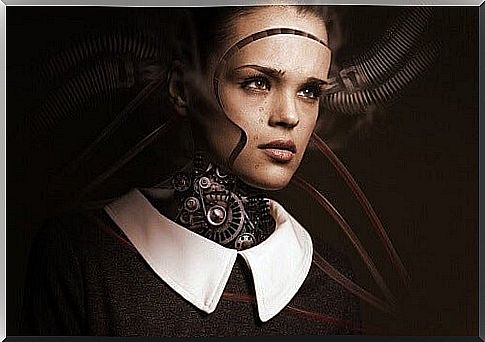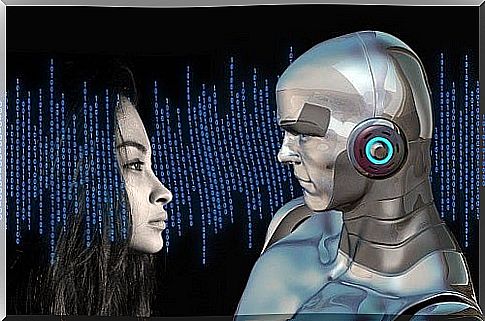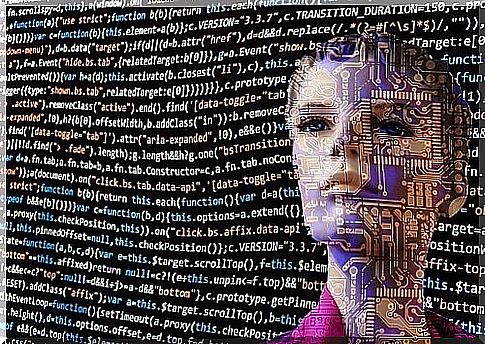Uncanny Zone: What Is It?

“When computers take over, it will be difficult to take them back. We will end up surviving by submitting to their will ”. These are the words of Marvin Minsky, father of artificial intelligence. What does such a statement suggest to you? Sounds a little creepy, don’t you think? Well, this feeling is completely justified, in fact, according to what is stated by the theory of the perturbing zone, there is a psychological explanation for this phenomenon.
Today’s reality is evolving at a mind-boggling speed. Any of the smartphones we all have in our pockets are more powerful than the computers that allowed humans to land on the moon a few decades ago. Clearly, this has generated notable progress, but also a certain mistrust of innovations. Technology now travels at an unsustainable speed. We discover in the following paragraphs the hypothesis of the so-called perturbing zone .
What is the uncanny zone theory?
New technologies allow us to carry out actions that a few years ago we would not have even imagined. Nowadays there are robots and other computerized creatures that have practically human features. If such creatures convey a certain anxiety to you, everything is in the norm, it is precisely from this sensation that the theory of the perturbing area (or valley) is born.

According to Professor Masahiro Mori, who proposed this theory in 1970, the more a robot resembles a human being (while still being distinguishable from them), the more empathic our reaction will be, to the point where the opposite reaction is triggered: a categorical refusal. In any case, if the robot will be difficult to distinguish from humans, our reaction will still be positive compared to that generated by robots that are too dissimilar to us. However, there is a “boundary” that must not be crossed in order to avoid generating a feeling of rejection.
Mori proposed this theory in 1970 during a study on human reactions to robotics. The creatures with artificial intelligence and robots frighteningly similar to women and men, but clearly distinguishable from the latter, provoked a strong sense of rejection in the people interviewed, as shown by the Pixar short film “Tin Toy” (1988) . The baby in this short film was very similar to a real baby, but not enough to generate a positive reaction.
Complementary theories to the uncanny zone
To date, no one has been able to state with certainty why this rejection occurs. Nonetheless, many researchers have proposed theories that could finally give us an answer, THE answer.
The most widely shared theory is that proposed by Thalia Wheatley, a psychologist at Darhmout College. According to Wheatley, our brains have a stimulus rating system that prevents us from choosing a partner with health problems. That is to say that if we notice in someone signs that they may not be suitable for reproduction, we are led to perceive it as a danger to the conservation of the species.
According to the research conducted by the scholar, human evolution has gone so far as to allow us to perceive even the slightest alteration. Once the “strangeness” is identified, a certain concern is created towards the individual-creature in question, since he seems to have physical or mental problems. This concern would also explain the existence of the so-called perturbing zone as a natural response to a possible “attack” on the conservation of the species.

Criticisms of the perturbing zone theory
According to the theory just exposed, our brain associates almost human (but not perfectly human) androids with people suffering from serious diseases, or even deceased. This is why we tend to react negatively to the sight of such robots.
Although this theory appears absolutely logical, it has nevertheless generated numerous criticisms. Many robotics experts, such as Ayse Saygin, a cognitive scientist at the University of California, point out that the technology related to androids is not yet sufficiently developed.
That is to say that this theory does not yet have sufficient scientific basis to affirm with certainty the existence of this phantom perturbing area. The feeling of discomfort could therefore simply be the result of a cognitive dissonance. When we are faced with certain typically human characteristics (facial expressions, but also behaviors), certain expectations are created in our brain which, not being met, generate cognitive dissonance. Regardless of their truthfulness, such theories allow us to better understand human empathy.
Well, what do you think? Do you happen to feel discomfort in front of robots that look too much like a human? If the answer is yes, then Mori was not entirely wrong with his uncanny zone theory. Anyway, come to think of it all this is a bit disturbing, don’t you think?









